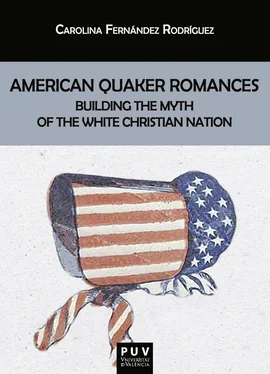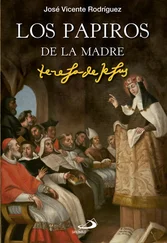Despite salient continuities, one should nonetheless note that Quakerism has diverged and splintered since its inception in the seventeenth century. Plain dress and speech have long been abandoned by most Friends, as have the strict rules that determined who was to be disowned, for example, for marrying outside the Quaker Meeting or for disobeying the Elders’ admonitions. Today, there is a Quaker population worldwide of approximately 380,000 (Staff 2017: n.p.) belonging to different branches which, in America, resulted from several nineteenth-century splits, though the separations did not affect British Friends in the same way. In brief, there are three branches of Quakers today (Dandelion 2008: 17-18). First, there are Evangelical Friends Churches which have pastors and give great importance to Scripture. This is the largest group worldwide and “they represent an important and aggressive strand of American Quakerism today” (Hamm 2003: 5). Second, there is a small group of Conservative Friends who still adhere to silent worship and plain dress. Finally, there are Liberal Friends, who are the most doctrinally permissive about matters of belief, and consequently include theist and even non-theist Quakers. They tend to be ideologically more progressive and to involve themselves as activists in various causes like disarmament, anti-racism, or environmental issues, to cite a few examples.
Many portrayals of Quakerism are bound to be loosely based on popularly held stereotypes rather than on actual Friends and they disregard the diversity that has existed within Quakerism since the nineteenth century. There is therefore a risk in approaching those, at times, inaccurate portrayals of Quakerism, especially if whoever deals with them is, like myself, an outsider to Quakerism, and who, unintentionally, may be further reproducing incorrect representations. On my behalf I can only say that I am conscious of that danger and have done my best to avoid it. This book’s main goal is to study the reasons why Quakers have come to inhabit the pages of many a romance, not to further exoticize or stereotype them.
Quaker Romances: A Subgenre within Christian Romances
The genre of popular romance has not been immune to the appeal of the Religious Society of Friends. The goal of this book is precisely to explore that attraction, although the analysis must first take into account the existence of a subgenre within the field of the romance, that is, the group of so-called Christian or Inspirational romances. Not all the romances that feature Quaker protagonists are Christian romances, however, though many are. Consequently, some notes on the terminology that I will be using to refer to the various types of romances considered in this book seem to be called for.
As a cover term, I will use the category Quaker romances to refer to all the romances with Quaker protagonists, that is, those in which either the heroine or the hero, or both, belong to the Religious Society of Friends. This is therefore the broadest category I will be using. Within it, there are two other categories: Christian or Inspirational Quaker romances, and secular Quaker romances.
Christian romances (often referred to in the romance community as “inspirationals”) are those romances published by Evangelical Christian publishing houses. As defined in “Inspirational Romance” by Rebecca Barrett-Fox and Kristen Donnelly (2021), they show the characters’ relationship with God, and a lack of detail about theology or religious ritual; they display no sexual contact (which is why they are also referred to as “clean” or “sweet” romances) and they tend to present women characters in traditional gender roles (though heroes may be less traditionally masculine than men in secular romances); finally, they portray a world where there is a brokenness of some kind, but the narrative proves that faith in God will eventually restore the said brokenness.
According to Barrett-Fox and Donnelly, the term “inspirational romance” is used by U.S. booksellers to refer to romances “targeted at conservative, evangelical, Protestants” (2021: 192) and it is “synonymous, in terms of marketing in bookstores, with ‘Christian romances’” (2021: 206). Kenneth Paradis has more generally defined inspirational fiction (therefore including romances and other types of narratives) as a group of novels that can be read “homiletically, not as replacements for scripture, but as lenses that can mediate and focus certain aspects of scripture, guiding its integration into readers’ lives” (2020: 76; emphasis in the original), hence the use of the term “inspirational” to refer to them. Besides, Paradis, like Barrett-Fox and Donnelly, has pointed out that inspirational fiction constitutes a genre in which “the characters spend a lot less time having, or fantasizing about, or talking about, sex, and, instead, spend a lot more time worrying about the relationship of their romantic lives to their spiritual lives and its moral entailments” (2020: 73). However, some inspirational romances happen to deviate from the general rule that sex and taboo issues such as rape, abortion, murder or infidelity should not be dealt with; these have sometimes been grouped under the label “edgy inspirationals,” which I will also make use of.
Though the category “inspirational romances” has been typically applied to romances published by Evangelical publishing houses or the Christian imprints of publishing houses, it has been argued that “writers seeking to address other religions’ takes on romance should also be included in scholarship on ‘inspirational romance’” (Barrett-Fox and Donnelly 2021: 206). This would imply that scholarship on romances featuring non-Christian religious groups like Jews or Muslims should be rightly included within the category of inspirational romance. The romances analyzed in this book are, for the most part, Christian in a conventional interpretation of the term. However, as will be shown, some authors of the romances studied in this book are Quakers themselves, and at least one of them has had her works published by a Quaker publishing house. Their romances tend to deviate from conventional Christian romances in a number of ways, as my book will argue, but I nevertheless agree with Barrett-Fox and Donnelly that their works are, in their own way, inspirational fiction as well.
For their part, secular Quaker romances differ from Christian romances in that they are not restricted by the “closed-door” treatment to sexual acts, that is, they may be much opener in their depiction of sexual scenes, and their characters may also be more progressive in their behavior, the roles they perform and the moral principles that guide them. Their relationship with God may be outstanding, and their focus on the restorative power of faith of paramount importance, too, but there are also many cases of secular romances in which the characters’ belonging to the Religious Society of Friends only appears as a marker of exoticism, mentioned here and there and soon forgotten, because their faith adds little value to the characters’ motivations.
Within the romance industry, so-called inspirational or Christian romances are considered one of the bestselling subgenres (Barrett-Fox 2016: 348). In economic terms, the Christian market may be a “relatively thin slice of the romance market,” but Christian romance publishing is nevertheless “a vibrant one” (Markert 2016: 207), said to generate “upwards of $50 million in annual sales, which is not an insignificant sum” (Markert 2016: 261). Christian houses “initially entered the romance field in the mid- to late 1980s in response to the overt sexuality of secular romances flooding the market during the height of the romance revolution in the early to mid-1980s” (Markert 2016: 207-208). Matthew Kapell and Suzanne Becker concur that “[t]he rise in acceptance of IRF [Inspirational romance fiction] was the result of a backlash among fundamentalist Christians against the onslaught of sexual permissiveness” and the “growing feminist movement” that advocated women’s right to move out of domesticity and “into the workplace with equal status to men” (2005: 151). Similarly, Barrett-Fox and Donnelly agree that it was in the 1980s that Christian romances underwent a transformation caused by major changes in American society:
Читать дальше












